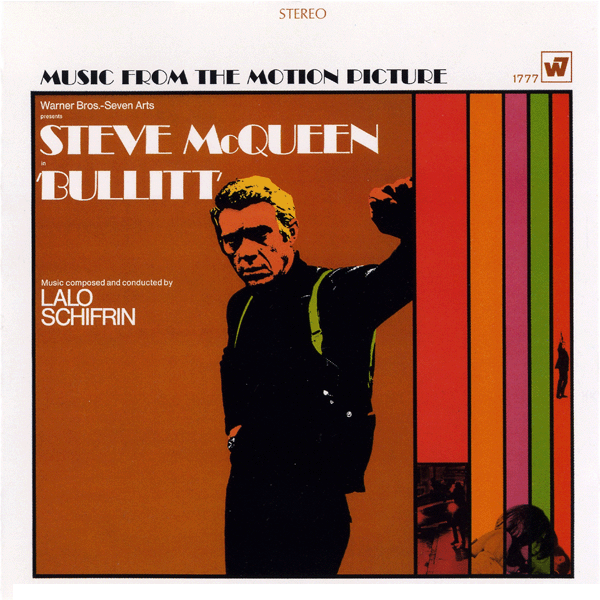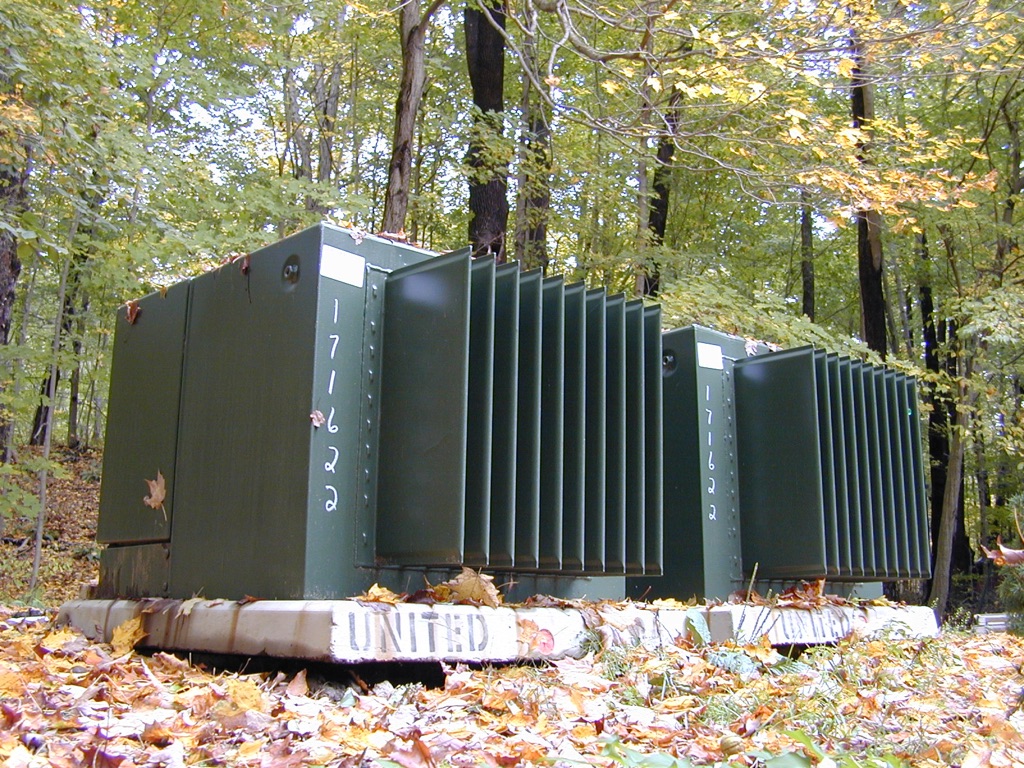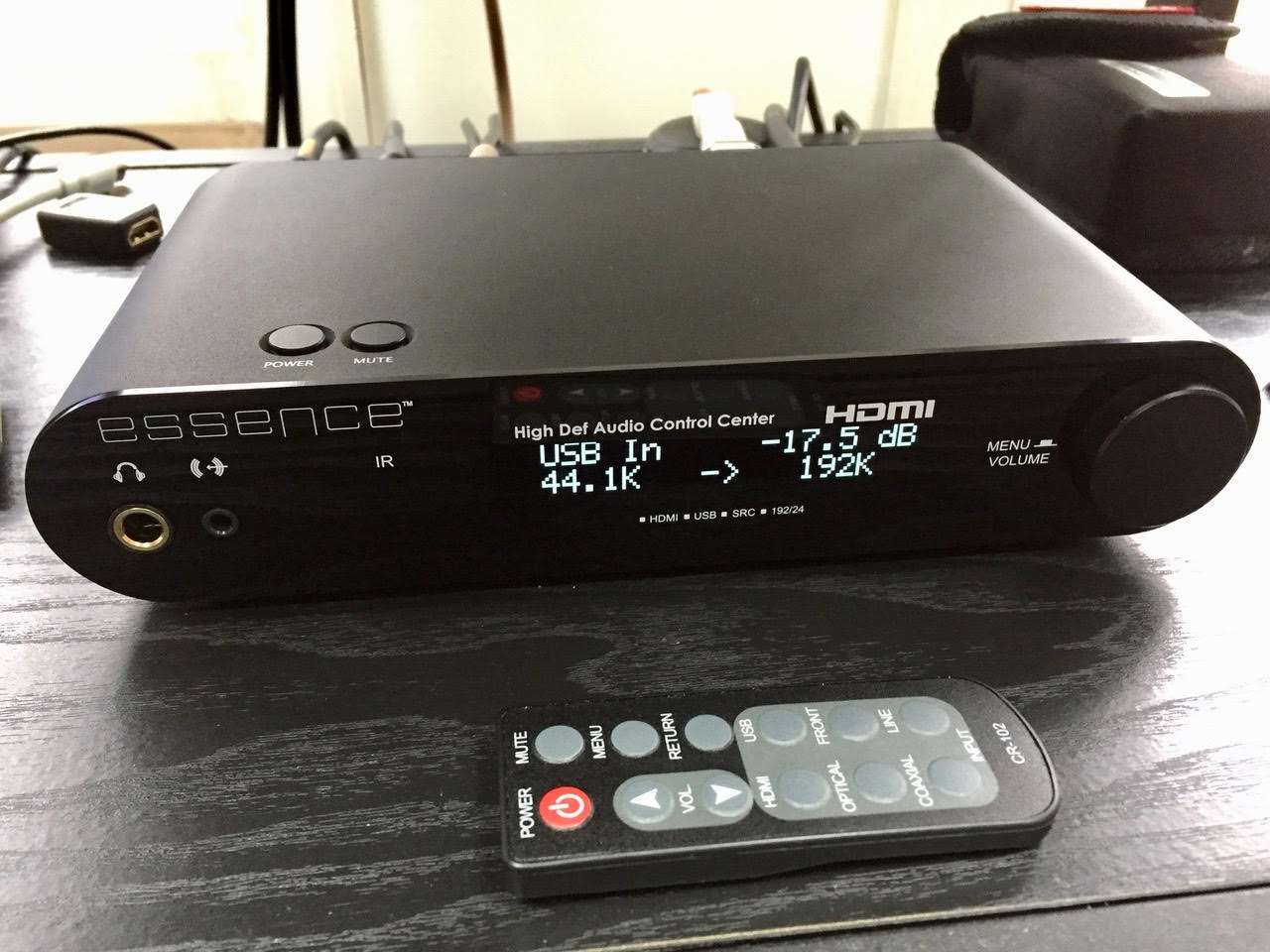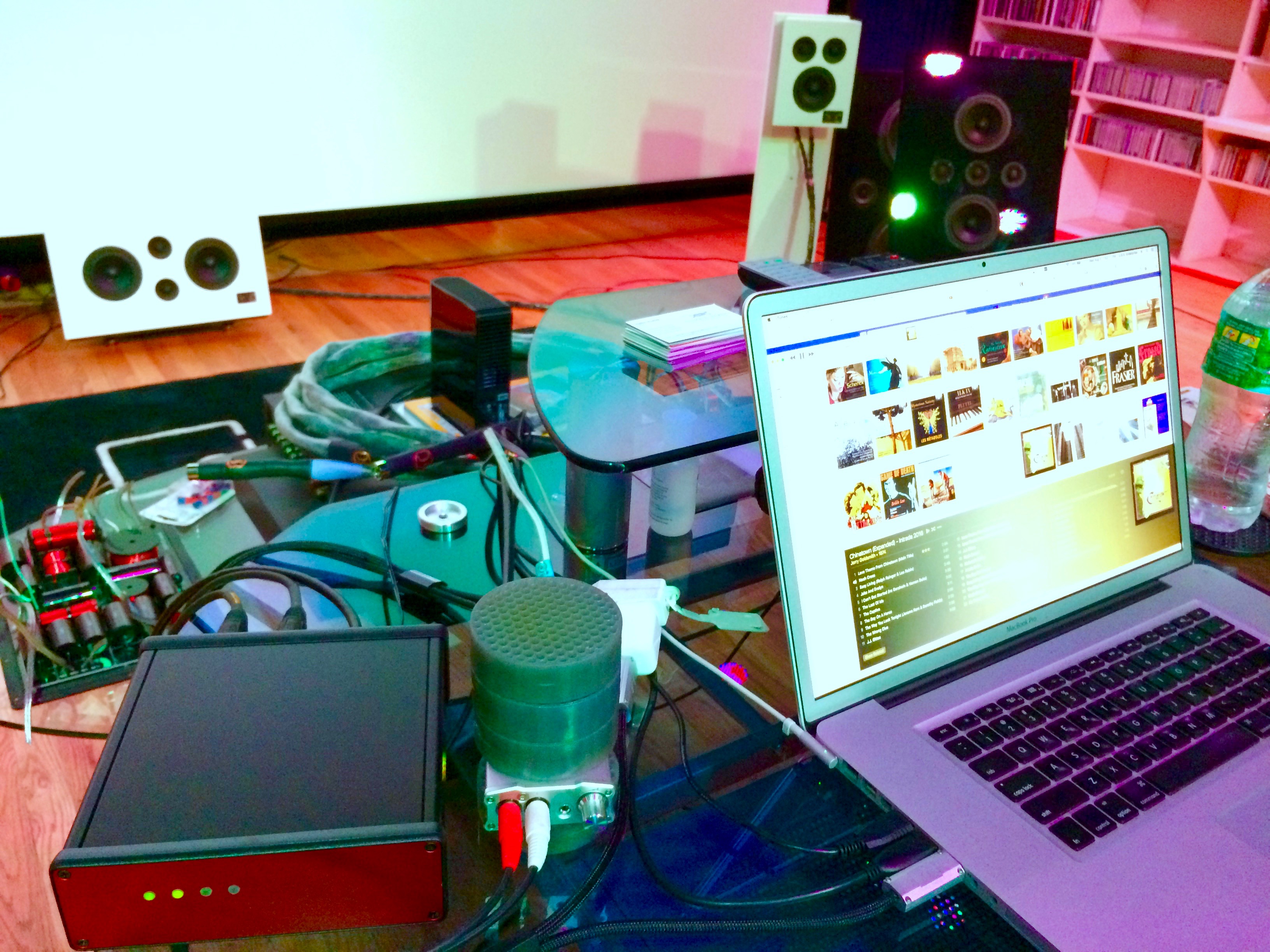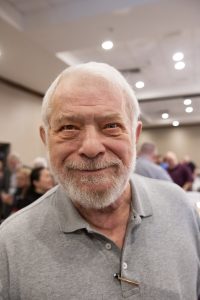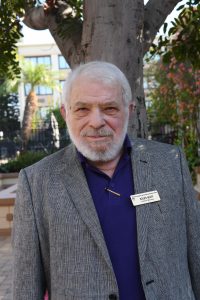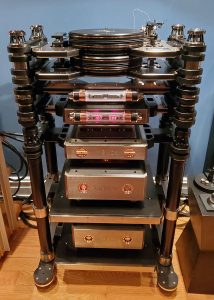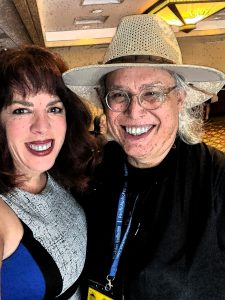Audiophiles are often use to trying many different methods and ways of thinking to improve the sound of their playback systems. One can find countless varieties of tweaks, accessories, and approaches to produce even small changes in the audibility of our favorite music and sound recordings. But one of the least understood of these is the fabled "Burn-In" Test Signal (or Tone) which logic indicates should be no different than simply playing your favorite music or test signal at the loudest possible level for a period of time before distortion and/or damage begins to set-in. The idea is that by exercising the complete playback chain, various factors which contribute to distortion and coloration will be vexed and eliminated from one's audio system; revealing a hidden truth to our favorites that has remained elusive to our hungry ears and soul. But there is a whole lot more to it then that.
Early on in my career as an audiophile and later as a recording engineer, I tried several of these "Burn-In" tones and observed various degrees of audible change to the sound of more than one system I treated. The first time I can recall was trying one of Sam Tellig's suggestions in his column for Stereophile Magazine wherein he recommended using a full frequency sine wave sweep, played at normal listening levels, that produced a new level of transparency in his favorite demonstration CDs & LPs; this was way back in the mid-1980's when my father, harpsichordist Igor Kipnis, first began reviewing music for that magazine. He described it as a "Cleansing" of the pallet of one's playback system, allowing the music to be produced from a much blacker and quieter background of silence, with intrinsically more dynamics (both macro and micro), a significantly wider, deeper, and taller soundstage, that also demonstrated a profoundly more holographic sense of space and size with every recording he played.
Later, when I began working for Bob Katz and then Chesky Records as a Producer and Recording Engineer in 1990, it became obvious how this simple yet effective use of a frequency sweep (and other variations) would improve not only our recording control room and editing suite audio systems, but also the recording chain, itself. So if one merely placed a speaker out in the studio in front of the microphone(s), we could effect the overall tonality and dimensionality of the albums we were producing just by playing the burn-in signal overnight. Admittedly, most of the engineers and producers at the various studios we recorded at (especially RCA/BMG) thought of this procedure as another form of "Snake Oil", and would routinely taunt us with cat-calls, derision, and names that are not fit for print (you know who you are)! But no matter. Once I had proven the value of the procedure to David & Norman Chesky, it became part of our checklist during the preparations leading up to a recording sessions first take.
The use of Burn-In Test tones continued into my direction of the famous Reader's Digest and RCA Living Stereo Chesky Records' remasterings from their extensive classical libraries, beginning in 1991. At this time, I met Pierre Sprey; owner and recording engineer of Mapleshade records as well as the electrical engineer responsible for the majority of the United States' F-16 Jet Fighter aircraft (1980's). His approach to interconnects, speaker cables, and power cords was, at the time, new to me. And with his consummate engineering came the realization that different cables not only sound different due to their choice of materials, weave, dielectric, and length but that they also sound different because of the surrounding gear they connect together. And therefore one must "try" all the different permutations if we are to arrive at some sense of sonic (and musical) truth. And so I endeavored by trial and error to compare and contrast a large variety of different wires and connectors used to interface across the recording and playback systems we used both for remastering older analog recordings on ¼" 15 IPS master tapes (first generation), new recordings we made using the single-microphone techniques exploited by Bob Katz, David Chesky, and Pierre Sprey (to mention but a few), as well as the wiring used in the cutting systems used to create LP Lacquers. Each of these moments of exploration improved my larger understanding of what makes-up the music and recordings we often take for granted and expanded the possibilities of my perception to include other areas of possible research; including the use of vibration and resonance control devices, power generation and filtration, acoustic treatments and furniture adjustment during both recording and playback situations, as well as the physical materials used to create a Record or CD, such as the type of vinyl or optical plastic, methodology used during replication and pressing, reflective metals (CD), temperature, humidity, and even all kinds of noise present during the production and replication processes, which all impact the final product's sound quality in many often overlooked ways.
When my friend, Chris Sommovigo queried me recently as to whether I would enjoy testing an experimental "break-in" track he had been toying with (very much still a work in progress), I immediately jumped on the opportunity; firstly because I love finding inexpensive ways to make a (relatively) large improvement in the playback fidelity of ANY audio system, but secondly because he is a brilliant man who loves music and audio and has NEVER stopped experimenting and learning how to make it better. Naysayers can think and say what they like (and they will) but one cannot always be certain that they have heard (pun intended) the last word on anything in human experience; especially when it comes to the playback and enjoyment of music. And so... he sent me a WAV file containing his latest "composition"—(my words).
Before I began, the first thing I did was to listen to three complete CD albums of Bach Cantatas conducted by Sir John Eliot Gardiner; over 3.5 hours of classical music involving various sized orchestras made up of period instruments (cat gut strings / valveless trumpets), chorus (of different sizes), and vocal soloists (SATB). The Cantata Pilgrimage, as it's called, was recorded live during their tour in 2000 with his esteemed Monteverdi Choir & The English Baroque Soloists Orchestra with solo singers Magdalena Kožená, Paul Agnew, Mark Padmore, Sara Mingardo, James Gilchrist and Peter Harvey. It therefore represents a wide variety of acoustic music presented with various sized ensembles, tempi, and volume levels; captured by expert producers and engineers at Archive Records. Therefore, any sound deviations from cantata to cantata would be easy to hear and the results of any changes created by the use of a "break-in / burn-in" track quite obvious.
After listening to the three of the CDs (out of 32) worth of this glorious baroque music, which I heard via ripped lossless ALAC (Apple FLAC) copies through my trustworthy Mac Mini computer (2006) using only iTunes (2008 OS & Software) for playback (initially—but later through Audirvana + and also Pure Music Player), decoded via the PS Audio PowerWave DAC (2012 PCM version) through a Light Harmonic SR01-30 3.0M LightSpeed USB Audio Cable, and transduced by the Waterfall Audio VICTORIA-Evo loudspeakers (2015) (on manufacturer's loan for review—coming soon to my column, here) powered by a pair of Bob Carver BLACK MAGIC 20 (2011) 40-watt (bridged Mono) Pentode tube amps fed from Yamaha OFC Studio Interconnects (1990) and through SKOGRAND 1.5m SC Markarian 421 (Pin to Pin) speaker cables (2012) with all gear cradled on top of Solid-Tech Rack of Silence resonance control suspension equipment stands & isolators, with Iso-Hex damping pucks used for cable suspension, and LessLoss DFPC power cords, I began the burn-in procedure.
Playing the single 10-minute long Burn-In track in repeat mode for an hour struck me immediately as much more than merely a test signal, like all the other burn-in tones I have used in the past. Here was a living, breathing expression of sound that was it's very own composition; as surely as anything that Bach or Mozart ever wrote. The 96/24 WAV audio file that Chris had sent me via Mega.nz, which I had transcoded losslessly to Apple ALAC using the free XLD App struck me as a brilliant musical composition created from the intricate combination of many intertwining sounds; some acoustic and others artificial. It produced a very organic sounding tapestry of sound that captivated me and it was obviously different from any other so called Burn-In signals because it sounded like music; perhaps composed by Stockhausen or Persichetti. This intriguing track offered up so much more than when even an open minded engineer listens to the classic sine wave sweeps, noise graduations, or conglomerations of mixed and overlapping sound effects and/or midi derived audio signals. It was alive! Even my wife, who normally thinks of all this sort or thing as "wankerdom" remarked how beautiful and interesting this piece was to listen to; giving it her spouse acceptance seal of approval instead of casting the usual short-sighted judgment that is simply an insult to audiophiles (and engineers) everywhere.
But here is where the fun really began because after suspending Chris' Burn-In signal and readjusting the volume of the PS Audio DAC to the exact level it had been before the procedure, several fascinating things occurred. First, there was the typical congestion that often follows an extended burn-in session, where the overall sound I heard initially seemed a bit strained and flattened while playing the first few minutes of the Bach Cantatas Pilgrimage I had listened to previously. But this gave way after a few minutes to a profoundly more detailed and resolved presentation where the individual qualities of the different live recordings became clearer and more individualized, especially over the course of the next hour of attentive listening. I have found, as with other Burn-In signals and experiments involving constant signal playback, that the audio system gets fatigued from being exercised continuously; often requiring a period of rest (or even overnight) in order to fully show the improvements. But here I dashed straight into listening in hopes of discerning any changes occurring before to much time passed. And as I listened, the audio playback continued to get better and better wherein the acoustic signature of the ambience in the church(s) became easier to resolve, separate from the orchestra, chorus, and soloists. The dynamics also evolved to reveal a much longer lasting echo (tail) that followed the initial attack from each instrument or singer much more than before. The space around each instrumentalist also grew over the course of the first hour or two of (re)listening to the same cantatas in a manner that would suddenly open up and pop-out at me; as if I had walked through a pair of doors into the auditorium and the sound began to wrap around me, noticeably, much more than it had before the Burn-In procedure and the many previous four weeks of reviewing the Waterfall Audio VICTORIA Evo speakers.
After the first two hours, things about the sound quality continued to expand in both size, depth, height, and scale so that the individual qualities of each instrument and the soloists began to be recognizable from within it's own acoustic envelope; affecting the ambient tail in individual ways that were much more clearly articulated in three-dimensional space between and behind the ensemble members of the orchestra and chorus as well as seemingly being much freer from the speaker's actual location in my listening room. It reminded me of the essential details one can discern when moving even one row closer to an orchestra in a live listening situation like a concert; the significance of each performer becomes ever clearer and at a certain distance one can clearly identify one instrumentalist separate from all the others. What this amounts to is no less than a miracle because (again, naysayers need not apply) the qualities of each recording became transparent (overused, but true, nonetheless) and more unique with no more than the playing back of a well crafted sound recording (burn-in track), whose goal is to remove long standing and often unnoticed colorations in an audio system that most often obscure a level of musical and spatial nuance that is only audible in the best playback circumstances; regardless of gear.
As I moved on past the Bach Cantata Pilgrimage to listen to other recordings in my collection, such as the studio album soundtrack of the Steve McQueen film BULLIT (1968 - both the original CD remastering on Warner Brothers and the Film Score Monthly—FSM re-remastering—both of which sounded quite good but a bit different from each other and the LP I heard later) I was made even more aware of small but crucial differences in audio presentation that affected how I perceived the music. Even more important, the breath of life that can only be heard on a truly high-end system that has been carefully set-up and tuned in an acoustically controlled environment were even more obvious than they had been prior to the Burn-In procedure. While this is a staple of exercising one's complete playback system, it was the specifics of this evolution of sound that set me back in my listening chair in wonder and awe that even frequently heard favorites sounded often very different from before; allowing for a greater connection with each new track and album I auditioned. This distinction should not be underestimated and is one of the reasons I became a recording producer and engineer, in the first place. Tiny changes to microphone location or adjustments to the balances in a mix can be quite magnified by a great playback chain of high-end gear. And the use of a well engineered Burn-In track will enhance these in meaningful and often unexpected yet important ways, such as the flattening of the soundstage and crushing of dynamics I heard between the original Warner and the FSM versions of BULLET, respectively. On lesser resolving systems, the FSM (re)remastering can often sound more forward and immediate (such as when heard on a BOSE Wave Radio—often maligned by audiophiles, but still a solid performer; capable of considerable presentation quality given proper set-up and source material. But here, on the very musically refined Waterfall Audio VICTORIA Evo loudspeakers it was the original Warner (re)mastering that offered better separation of the elements and a greater sense of live performance; even at the expense of a little bass and treble extension found in the equalized version on FSM (that also includes the original film soundtrack—itself a much better and simpler sounding recording).
And so it went, from CD to CD, and eventually from record to record (using the ELP Laser Turntable and many fine albums on vinyl, including several from 2L and Acoustic Sounds Records in addition to a whole slew of classic audiophile staples from Columbia, Chesky, Decca, Deutsche Gramophone, Geffen, Mercury Living Presence, RCA Living Stereo, Reference Recordings, Telarc, and Warner. It should not be construed that every album necessarily sounded better than before but rather that individual characteristics that were present became more so. And this expansion of what was already in the grooves (or pits) allowed for the work of so many fine artists, producers, and engineers to be more fully realized and musically involving. It drew me in as a listener even more than before. So while I have used many, many so called Burn-In records and CDs (even making a few of my own and including them on my label, Epiphany Recordings Ltd.), here Sommovigo's funny little experiment allowed for a new level of musical and sonic appreciation that I would not have necessarily anticipated. So it is with great pleasure that I insist you try your favorite playback system with your favorite tunes again and again; both before and after the use of a good Burn-In Signal, because you may not have heard it all, just yet—and you will be surprised, I think, by what has remained hidden in those familiar tracks... until now!
(Please see my websites for further information about matters both Audio and Visual!)
Kipnis Studio Standard (KSS)™ www.JeremyKipnis.com
Epiphany Recordings Ltd. www.EpiphanyRecordingsLtd.com




